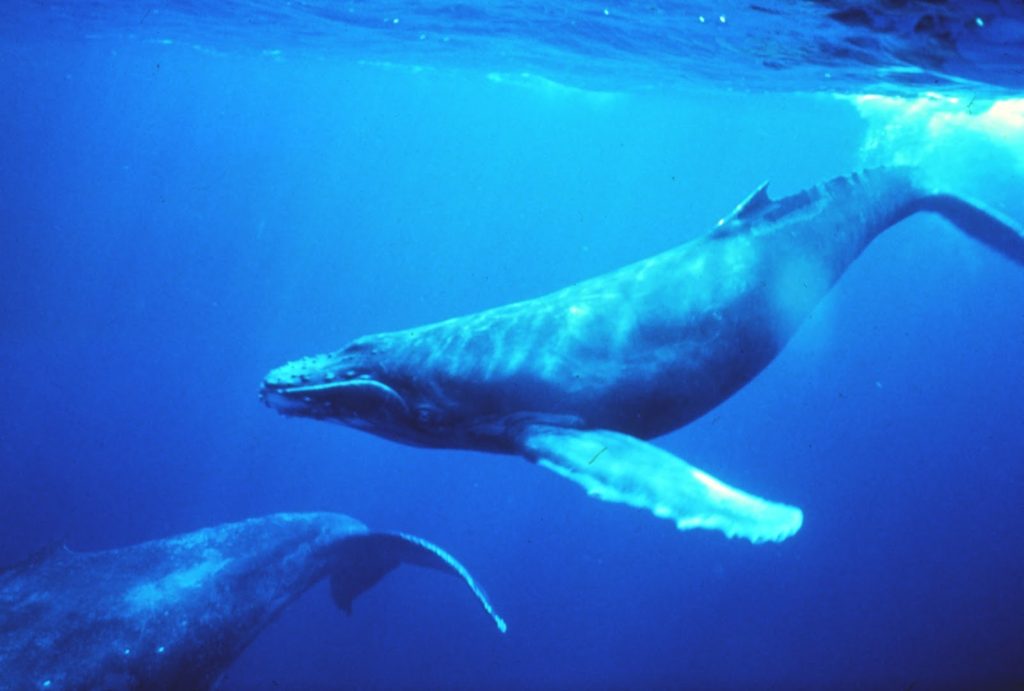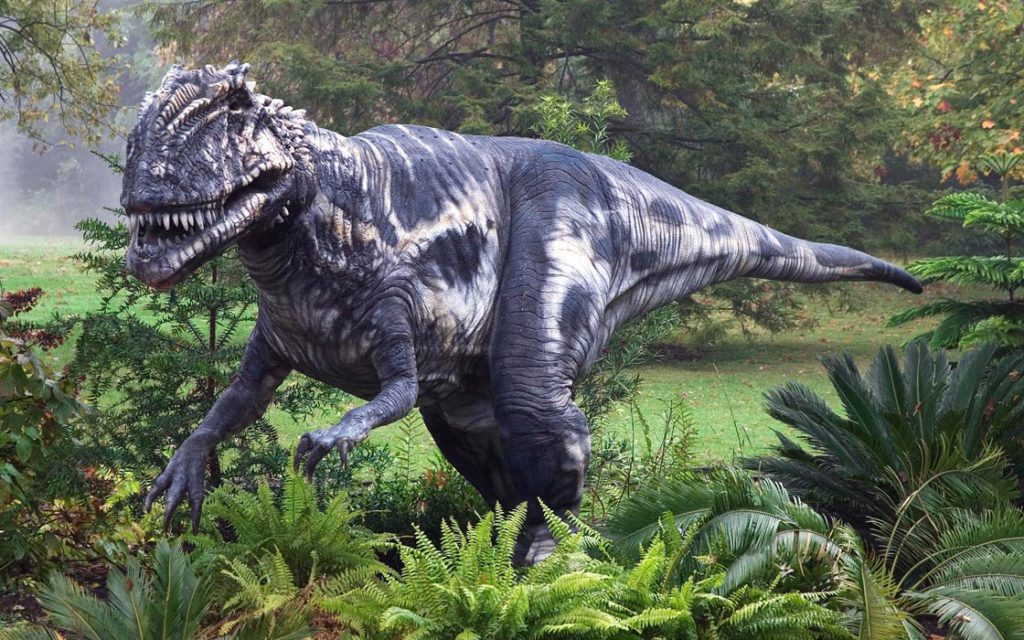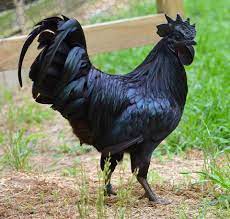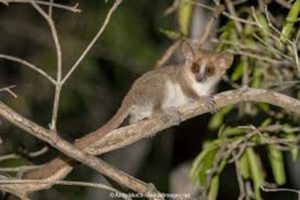Birds are the last surviving groups of dinosaurs. They are vertebrates and are characterized by feathers, a strong skeleton and toothless beaks. Furthermore, they reproduce by laying hard-shelled eggs.
Most of the birds we see daily are small and often weigh only a few grams. However, some species of birds can be over 2 meters high and weigh about 104 to 156 kilograms. In this article, we will discuss 15 of the largest birds that live on the planet.
Top 15 largest birds living on the planet
Common Ostrich

The common Ostrich is the largest bird in the world. These birds are native to Africa and usually weigh between 63 to 145 kilograms. Some male birds can even weigh up to 156.8 kilograms. Male ostriches are about 2.1 to 2.8 meters high, while female ones are 1.7 to 2.0 meters tall.
Facts about the common Ostrich
Ostrich-Information – Download
- Due to its bulky body, an ostrich can not fly. Thus, it has adapted to life on the ground with amazing agility. Ostriches have large and powerful legs. This makes them fast runners. They can sprint up to 70 km/h. Therefore, the ostrich is known as the fastest animal on two legs.
- Ostriches mainly feed on shrubs, seeds, fruits, small insects, and flowers. They also swallow small pebbles to grind the food they consume in the stomach. An ostrich’s stomach can hold up to 1.3 kilograms of pebbles and sand.
- Ostriches can also survive without water for many days.
- A female ostrich may lay up to 60 eggs per year.
- Ostriches usually live in groups of 10 to 50 birds.
Somali ostrich
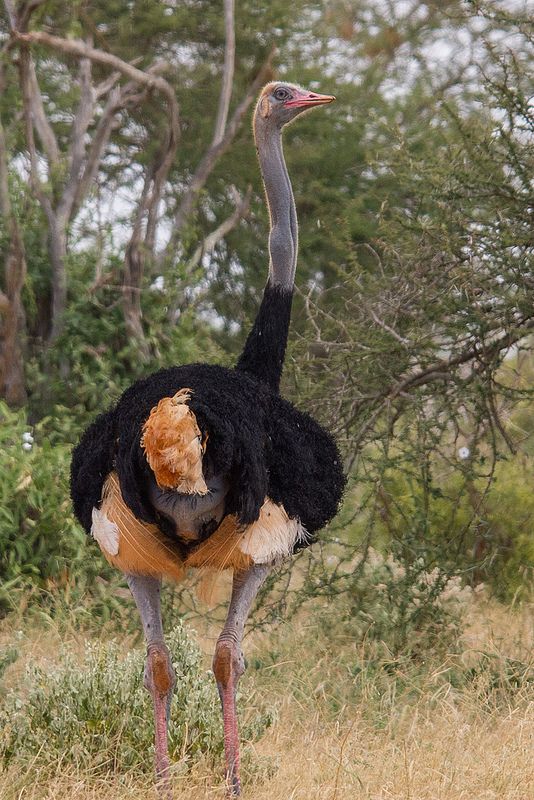
The second biggest bird on Earth is the Somali ostrich, native to the Horn of Africa. They are found in Somalia and northeastern Ethiopia. A male Somali ostrich can weigh up to 130 kilograms.
Facts about the Somali Ostrich
- Unlike the common ostrich, Somali ostriches prefer bushier, thickly vegetated areas.
- They hunt for lizards, snakes, rodents, and locusts. Additionally, they also consume roots, leaves and seeds. Somali ostriches also consume small pebbles to grind food in their stomach.
Southern Cassowary

A Southern Cassowary is the largest Asian and Australian bird, native to New Guinea, Indonesia and northeastern Australia. The bird is about 127 to 170 cm high and weighs about 36 to 50 kilograms (males) and 60 kilograms (females).
Facts about the Southern Cassowary
- The largest Southen Cassowary recorded was 190 cm tall and weighed 83 kilograms.
- Southern Cassowaries live in lowland rainforests, generally at elevations less than 1,100 meters. They prefer an elevation less than 500 m in New Guinea. They usually live in eucalyptus forests, palm scrub, forest swamps, and savannahs.
- Southern Cassowaries mostly feed on fruits that have fallen on the ground as they can not fly. They also eat fungi, insects and small vertebrates.
Northern Cassowary

Northern Cassowary, also known as the golden necked Cassowary is a large bird native to New Guinea. The female members of the species weigh up to 70 kilograms while the male members are smaller and weigh about 47 kilograms. The birds grow up to a height of 1.8 meters.
Facts about the Northern Cassowary
- A Northern Cassowary can sprint up to 50 kilometres per hour.
- They are only found in tropical lowland rainforests where they range from sea level to 500 m above it.
- In the wild, an adult Cassowary can eat hundreds of berries and fruits in a day. In addition, they consume small animals such as frogs, mice, rats, snakes, lizards, insects, and birds. They will also eat dead animals, if found. The young often consume the faeces of the males raising them as it contains undigested fruits.
- In captivity, adult Cassowaries consume 19 litres of fruit and 1 litre of protein a day.
Emu
The emu is a flightless bird, endemic to Australia. They can reach up to 1.9 meters and weigh between 18 and 60 kilograms. The female members of the species are slightly larger than the males.
Facts about the Emu
- They can sprint at speeds of 48 kilometres per hour.
- After the European settlement of Australia, the Tasmanian emu and King Island emu subspecies became extinct.
- Emus, occupy almost all available biomes in Australia, which includes, grasslands, savannah forest etc. However, they avoid deserts and heavily wooded areas as they require standing water.
- Emus primarily consume insects, fruits, seeds, and small animals. They also feed on animal droppings. Emus do not have a crop for break down or storage of food. Instead, they have a modified oesophagus that can store food for 30 minutes before entering the stomach.
- Since Emus experience starvation for weeks, they store large amounts of fat in preparation. They lose more than half this stored fat during long starvation periods.
Emperor Penguin
:focal(1100x1068:1101x1069)/https://tf-cmsv2-smithsonianmag-media.s3.amazonaws.com/filer/32/47/324725e8-25b7-4be4-bb10-25f7d3145bc5/istock-147290529.jpg)
The Emperor Penguin is native to Antarctica where the temperatures reach -60 degrees Celcius. They weigh 22 to 45 kilograms and can grow up to 130 cm in height. The male and female members of the species are similar in plumage and size.
Facts about the Emperor Penguin
- During the breeding season, Emperor Penguins gather on dense stable ice attached to the coastline. 7 to 8 weeks after the eggs hatch, they leave their settlements and migrate toward open ocean areas.
- Outside the breeding season, they live on ice zones where the sea is easily available for foraging.
- Emperor Penguins are carnivorous and feed on fish, molluscs and crustaceans. They have a rough and spiky tongue that helps them catch and eat slippery fish and squids easily.
- Emperor Penguins can dive to depths of up to 500 m in search of food.
Greater Rhea
/https://tf-cmsv2-smithsonianmag-media.s3.amazonaws.com/filer/9e/12/9e12a65f-44de-4c37-ac8e-3467e1a322ad/42-33402194.jpg)
- Greater Rheas weigh between 20 and 40 kilograms and stand at 0.9 to 1.5 meters tall. They are the largest birds on the American continent. They are native to Bolivia, Brazil, Argentina, Paraguay and Uruguay.
Facts about the greater Rhea
- The greater Rhea can run up to 56 km/h.
- Greater Rheas live in low vegetation grasslands and pampas areas of South America. They are also found in open woodlands and saline marshes. They like areas that are close to water bodies and have good visibility and food availability.
- Greater Rheas are omnivores and feed on grass, leguminous crops, agricultural grain, small vertebrates, and insects. 99% of their diet comprises grain and plants, while small animals account for the remaining 1%. Rheas also ingest small stones to grind food.
Domesticated Turkey
Turkey was domesticated by the people of central Mesoamerica 2,000 years ago. These birds can grow up to 1.17 meters tall and weigh about 39 kilograms.
Facts about domesticated Turkey
- Although wild Turkeys can fly short distances, domesticated Turkeys cannot. However, they are good swimmers and runners.
- Domesticated turkeys have a diet containing insects, lizards, vegetables, grains, and berries. They are also fed high protein diets to add more pounds to the bird.
Darwin’s Rhea

Darwin’s Rhea, also known as the lesser Rhea is about 90 to 100 cm tall. The bird weighs between 15 and 28.6 kilograms. They are native to the Altiplano or the Andean Plateau, in west-central South America.
Facts about the lesser Rhea
- The diet of a lesser Rhea consists of fruits, seeds, broad-leafed plants, and roots. They also consume insects, lizards, and small rodents.
- Lesser Rheas are sociable creatures, form groups of 5 to 30 birds. However, during the mating season, males become aggressive and territorial, while females cluster in groups.
Dwarf Cassowary

The dwarf Cassowary is also known as Bennett’s Cassowary. It is the smallest of the three species of Cassowary. It is about 90 to 150 cm tall and weighs between 17.6 and 26 kilograms. They are found all over the mountain forests of Yapen Island, New Guinea, and New Britain, at an elevation of 3,300 m above sea level.
Facts about the dwarf Cassowary
- Dwarf Cassowaries prefer areas that are thickly vegetated with subtropical or tropical forests.
- They feed on fallen fruits or fruits from shrubs as they can not fly. Dwarf Cassowaries use the crest on their head to sort through leaf litter and reveal fungi, plant tissue, insects, lizards or frogs, which they also consume.
King Penguin

King Penguins live in northern Antarctica, South Georgia and other temperate islands in the region. On average, they weigh 9.3 to 18 kilograms and are about 70 to 100cm tall. The male members of the species are taller than the female ones. It is the largest species of penguin after the Emperor Penguin.
Facts about the King penguin
- The Penguins travel up to 500 km from their colony to the ocean to hunt for cephalopods, squid, and small fish.
- They can remain underwater for approximately 10 minutes and reach speeds of 12 km per hour while diving.
- Adults take turns to supplement the young that stay in the breeding grounds.
Great Bustard and Kori Bustard
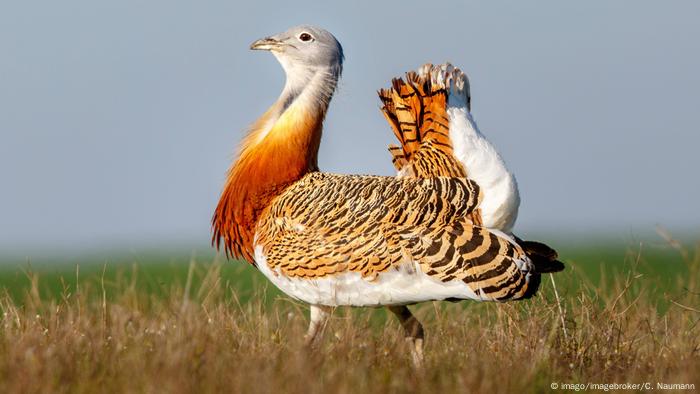

The Great Bustard and Kori Bustard are the heaviest living flying animal. The Great Bustard is native to central/south Europa and temperate Asia. However, nowadays, Portugal and Spain contain about 60% of the world’s Great Bustard population. A male Great Bustard is 90 to 105 cm tall, while the females are about 75 to 85 cm tall. The males weigh between 5.8 and 18 kilograms, and the females are 3.1 to 8 kilograms.
The Kori Bustard, on the other hand, is native to Africa. The male kori bustard is about 120 to 150 cm high and weighs about 7 to 18 kilograms. The female members are roughly half the size of the males and weigh an average of 4.8 to 6.1 kilograms.
Trumpeter Swan
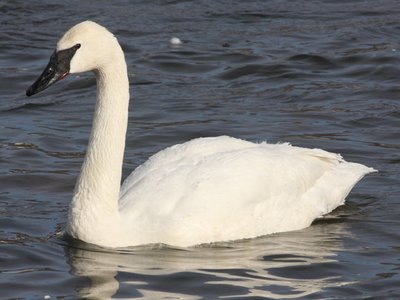
Trumpeter Swan adults usually weigh 7 to 13.6 kilograms and are 138 to 165 cm long. However, the largest males can exceed 180 cm. They are native to North America mainly Alaska, the northern USA, and Canada.
Facts about the Trumpeter swan
- Trumpeter Swans are the heaviest flying birds and have a large wingspan of over 3 meters.
- During the 19th and 20th centuries, Trumpeter Swans were nearly extinct as they were heavily hunted. However, by 2010 their numbers increased to over 46,000.
Andean Condor

The Andean Condor can reach a height of 100 to 130 centimetres. The males weigh about 11 to 15 kilograms, while the females weigh 8 to 11 kilograms. The bird is the national symbol of Bolivia, Argentina, Colombia, Ecuador, the Venezuelan Andes and other South American countries.
Facts about the Andean Condor
- The birds have a large wingspan of over 3.3 m.
- Andean Condor plays an essential role in folk tales and mythology of the South American Andean regions, where they are thought to be the rulers of the upper world. The bird is also considered a symbol of power and health.
- It is the national bird of Chile, Colombia,Ecuador, and Bolivia.
Dalmatian Pelican
The Dalmatian Pelican is one of the world’s heaviest flying bird species. It measures 160 to 183 cm in length and weighs about 7.25 to 15 kilograms. The bird is native to Central Europe, India, Mongolia, Russia, and East China.
Facts about the Dalmatian Pelican
- The wingspan of the bird is about 290 to 345 cm.
- Dalmatian Pelicans are piscivores, thus, they mainly eat fish. An adult can eat about 4 pounds of fish in a day.
- They hunt in small groups of three to five birds or team up with other aquatic birds like cormorants.
Summary
Given below is a table summarizing 15 of the largest birds on the planet.
| Rank | Animal | Binomial Name | Average mass | Maximum mass | Average total length | Flighted | Wing span |
| [kg (lb)] | [kg (lb)] | [cm (ft)] | [cm] | ||||
| 1 | Common Ostrich | Struthio camelus | 104 (230) | 156.8 (346) | 210 (6.9) | No | 200 |
| 2 | Somali Ostrich | Struthio molybdophanes | 90 (200) | 130 (287) | 200 (6.6) | No | 200 |
| 3 | Southern Cassowary | Casuarius casuarius | 45 (99) | 85 (190) | 155 (5.1) | No | 150-200 |
| 4 | Northern Cassowary | Casuarius unappendiculatus | 44 (97) | 75 (170) | 149 (4.9) | No | 150-200 |
| 5 | Emu | Dromaius novaehollandiae | 33 (73) | 70 (150) | 153 (5) | No | 20 |
| 6 | Emperor Penguin | Aptenodytes forsteri | 31.5 (69) | 46 (100) | 114 (3.7) | No | 76-89 |
| 7 | Greater Rhea | Rhea americana | 23 (51) | 40 (88) | 134 (4.4) | No | 250 |
| 8 | Domestic Turkey | Meleagris gallopavo | 13.5 (29.8) | 39 (86) | 100 – 124.9 (3.3 – 4.1) | Yes | 121-144 |
| 9 | Lesser Rhea | Rhea pennata | 19.6 (43) | 28.6 (63) | 96 (3.2) | No | 250 |
| 10 | Dwarf Cassowary | Casuarius bennetti | 19.7 (43) | 34 (75) | 105 (3.4) | No | 150-200 |
| 11 | King Penguin | Aptenodytes patagonicus | 13.6 (30) | 20 (44) | 92 (3) | No | 76 |
| 12 | Great Bustard | Otis tarda | 10.6 (23.4) | 21 (46) | 115 (3.8) | Yes | 250 |
| 13 | Kori Bustard | Ardeotis kori | 11.4 (25.1) | 20 (44.1) | 150 (5) | Yes | 213-274 |
| 14 | Trumpeter Swan | Cygnus buccinator | 12.7 (28) | 17.2 (38) | 138-165 | Yes | 243 |
| 15 | Andean Condor | Vultur gryphus | 11.3 (25) | 14.9 (33) | 100-130 (3.3-4.3) | Yes | 330 |
| 16 | Dalmatian Pelican | Pelecanus crispus | 11.5 (25) | 15 (33.1) | 183 (6) | Yes | 350 |
FAQs
1. Which is the strongest bird?
The largest and strongest living bird is the North African ostrich. Male members of the species can grow up to 9 feet and weigh about 345 pounds.
Adult North African Ostriches are popular for their commercial value. The creatures are bred for their large soft white feathers, their meat and skin, which are made into the toughest commercially available leather in the world.
2. What is the largest bird of prey?
The Philippine eagle is considered the largest existing species of eagles in the world. The bird measures 86 to 102 cm in length and have a wingspan of 184 to 220 cm. However, in terms of weight and bulk, Steller’s sea eagle, the Harpy eagle and the Martial eagle are all bigger than the Philippine eagle.
3. Which is the fastest bird?
The Peregrine Falcon is the fastest bird. The bird can fly at speeds between 124 mph and 168 mph while swooping from great heights during territorial displays or catch their prey mid-air.
4. What bird has the fastest wingbeat?
The horned Sungem has the fastest wingbeat. It is species of hummingbird native to South America, that flaps its wings up and down about 90 times a second.
5. Which is the largest bird to have ever lived?
Vorombe, the big bird of the world, is one of three extinct elephant birds. Evidence of the bird was discovered in 2018 and weighed between 536 to 732 kilograms. Furthermore, it grew up to 10 feet in height. Its name translates to the big bird, in Malagasy and Greek.
6. Which is the heaviest flying bird?
The heaviest known flying bird is Argentavis magnificens, also known as the magnificent silver bird. The species is now extinct, but it weighed about 70 to 72 kilograms, approximately twice a Pelagornis’ weight. It had a wingspan of approximately 5.09 to 6.07 m and a height of 1.5 to 2 m.
7. Can flamingos fly?
Yes, flamingos can fly. They prefer to fly during cloudless days with favourable tailwinds. Flamingos can travel approximately 600 kilometres in one night at about 50 to 60 kilometres per hour. During the day, flamingos fly at high altitudes to avoid predation by eagles.
8. What bird can pick up a human?
The golden eagle, living in North America, northern Africa and Eurasia measures about 27 to 33 inches in length and has a wingspan of 78 inches. The bird weighs 7 to 14 pounds and feeds on rabbits, squirrels, marmots etc. It has been known to snatch foxes, livestock and adult deer. Furthermore, it is powerful enough to kill an adult man and carry babies away.
9. Can a bird fly backwards?
Although hummingbirds are the champions of backwards flight, they are not the only ones who can do so. When two herons or egrets fight, occasionally the one who is caught at a disadvantage will flutter backwards. Warblers fluttering at the tip of a branch will flutter backwards and then fly towards an insect to pick it up. Overall, any bird that uses a fluttering flight can move backwards when prompted to do so.
10. Which birds have the largest wingspan?
1. Wandering Albatross
The Wandering Albatross has a maximum wingspan of 3.7 meters or 12.1 feet. The bird is native to Australia and New Zealand, but circles the globe on its travels. It has a characteristic white underwing with a black tip.
2. Great White Pelican
The Great White Ppelican has a 12-foot wingspan. It lives in swamps and shallow lakes across southeastern Europe, Asia, and Africa. Males weigh up to 33 pounds, while females are lighter and weigh about 20 pounds. These birds generally breed in South Africa. They are social animals and feed in groups of six to eight.
3. Southern Royal Albatross
The Southern Royal Albatross also has a wingspan of 12 feet. They live mainly in South American waters but return to Campbell Island, as they circumnavigate the globe to lay their eggs. Their diet consists of fish caught from the water’s surface or slightly below.
4. Tristan Albatross
The Tristan Albatross is native to the South Atlantic Ocean. It has an 11-foot wingspan that helps it forage over a lot of territories. Females feed to the east of the island, while the males forage to the west. These critically endangered birds only breed every other year, after which they mate for life. The females lay their eggs in an open heath with plenty of room to soar when taking off. Once hatched, the chicks do not leave their nests until November. The bird becomes sexually mature when it is 10 years old.
5. Antipodean Albatross
The Antipodean Albatross lives in South Pacific and comes back to New Zealand’s Auckland Islands, Campbell Island, and Antipodes Islands to breed. This bird can weigh up to 19 pounds and have an 11-foot wingspan.
It only lays eggs every two years, always returning to the area it was born to lay eggs. Antipodean Albatrosses do not become independent until they are 250 days old. Additionally, they become sexually mature when they are seven years old. Both the males and females share responsibility for incubating the eggs and raising the young
Share with your friends

